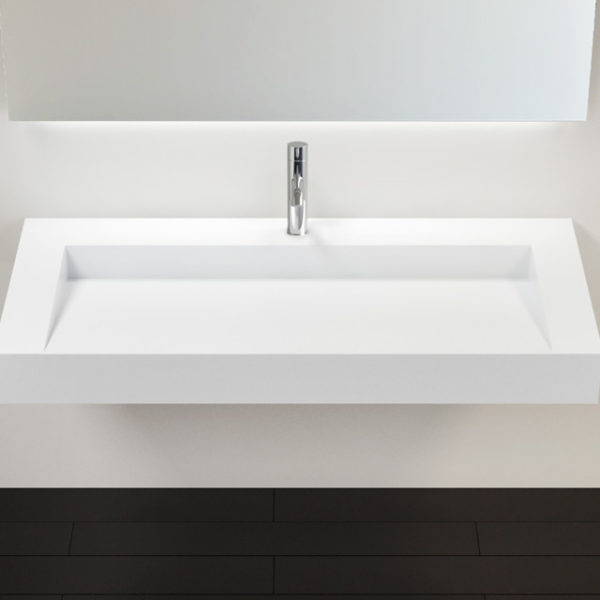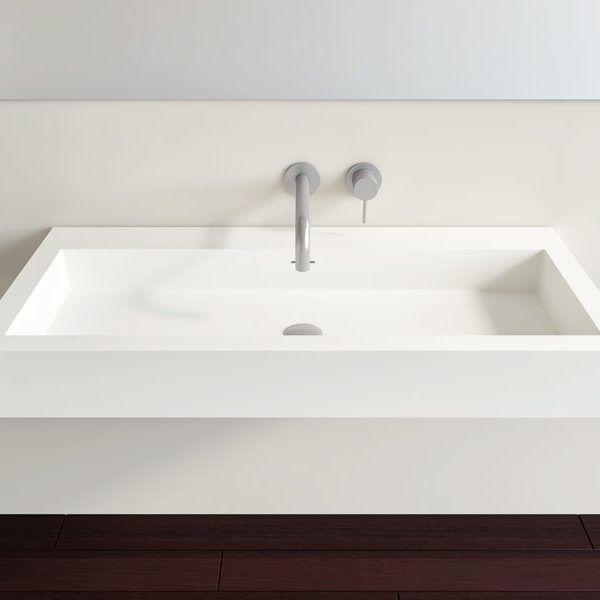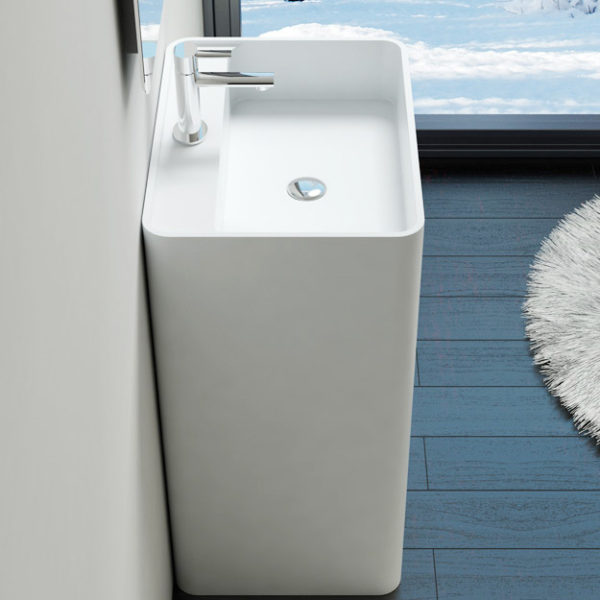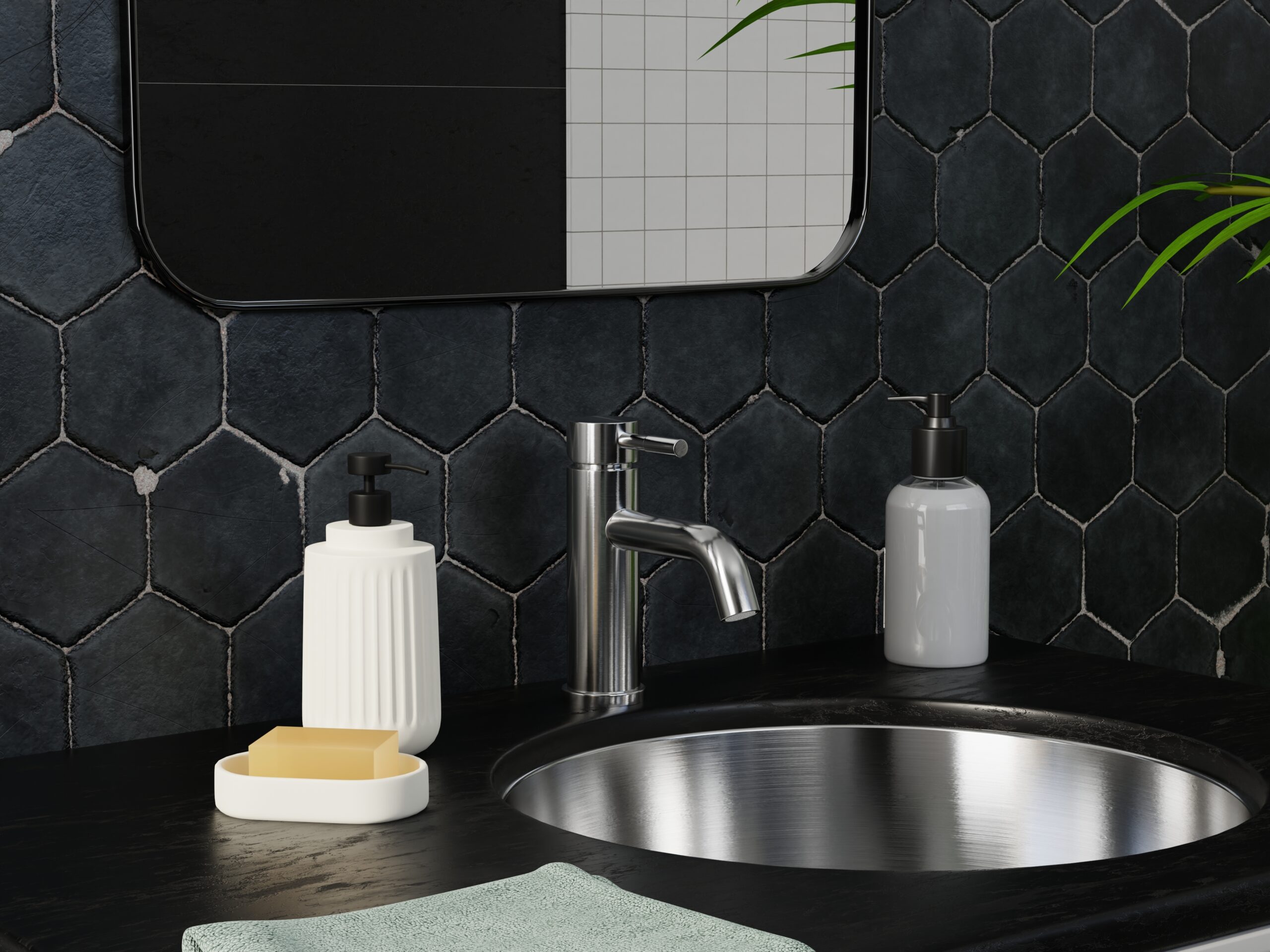
Is a Heated Freestanding Bathtub Worth It?
In recent years, the bathroom has evolved from a purely functional space to a sanctuary of relaxation and rejuvenation. One
No matter what kind of sink you have in your house, be it porcelain or stainless steel, proper maintenance is a must. And with proper maintenance comes understanding what kind of stains threaten the longevity of your sink and how best to prevent it. Commonly, the worst stains result from highly corrosive or abrasive cleaners not blending well with the sink material used. So please take care to understand what materials can handle the punishment and which can’t.

Rust stains occur when iron or any alloy-based material is exposed to moisture and oxygen for long periods of time. It is quite commonplace with many iron or alloy-based due to the nature of many bathrooms not being greatly ventilated, thus trapping air and moisture. The metal itself is oxidizing and combined with the air to become an oxidized compound which takes the appearance of rust, which weakens the material itself and leaves behind a messy stain afterward that must be cleaned thoroughly.
If you are prone to DIY hair treatments or you use your bathroom frequently for any number of self beautification methods, chances are you will accrue a number of dye stains. These are the result of the chemical compounds leftover in hair dye and spray tans, similar to permanent marker, except for the surfaces of your bathroom. And like a permanent marker or nail polish, the nature of these stains can be dealt with in much the same way-using acetone, paint thinner, WD-40, bleach or diluted vinegar.
Quite similar to dye stains, chemical or acid stains will occur depending on a multitude of products you use. Acid stains are quite common in steel-based sinks, which will occur gradually due to the acid levels in cleaning products used in your bathroom or kitchen or in some cases even acid based products. Chemical stains are usually the result of highly corrosive or toxic chemicals in abrasive cleaners tearing through the coating and enamel in your sink.
Hard water results from the water near your home being mineral rich, usually in calcium, magnesium which is actually a good thing, but in this case, the hardwater will leave behind a very sizeable stain in your sink just through normal use. In fact, with hardwater, your appliances have about 30-50% less projected lifespan due to the destructive nature of hardwater. Commercial cleaners can remove the stains temporarily, but the core of the issue is your water’s composition. Buying water softeners is the key to dealing with this type of stain long term. Coffee
Most problematic in porcelain or more polymer based sink materials, coffee stains occur much the same way that chemical or acid stains occur-pouring too much coffee down your wall mounted sink which causes cause blotchy stains to form. So, depending on how much coffee you drink and dispose of, this type of stain can get problematic real quickly as the cleaning process of it is simple, but time consuming. Coffee is highly acidic if undealt with, it can rust or corrode the integrity of your entire sink without proper care.

Stainless steel sinks are sinks made from steel composite that are highly resistant to corrosion or rusting. Though resistant, these sinks will still rust overtime due to normal wear and tear from continual exposure to oxygen and moisture. These sinks also respond quite poorly to acidic substances, usually found in more abrasive cleaners though everyday things such as coffee or even juice can also stain these types of sinks. The most common treatment for most sink stains will be:
1. Either using the sink itself or a spray bottle, wash off the sink with water first
2. Mix equal parts baking soda or water(substitute lemon juice instead of water for more aggressive build-up) until they form a thick paste, adding more liquid if your paste isn’t thin enough.
3. After discovering the correct consistency, apply your paste to the stain.
4. Let the paste sit for 15-20 minutes before washing it off
5. If the paste does not work, soak the area in ammonia, but take caution to ventilate the area as this process will produce fumes.
Of course, this method is a very common DIY solution for many sink types and the results may vary depending on your sink and the stain damage already sustained. However, in the case of stainless steel, there are a few store bought solutions that can mollify the appearance, making it appear just as new. For store bought solutions, Autosol is very handy for rust based stains, and many liquid cleaners can deal with more intrusive build up, though take care to look at their ingredients and strength level as they may end up leaving behind more residue if you are not careful.
Stone resin sinks are sinks made from crushed stone bonded by an adhesive or polymer. As these sinks are constructed from natural stone and polymers, they will not oxidize and develop rust like steel sinks, nor will they show water damage like porcelain or stain through acidic compounds like coffee but they face a different set of issues-these sinks are incredibly sensitive to chemical and acidic stains or man-made products like nail varnish, dye or paints. If a highly abrasive or corrosive cleaner is spilled on these sinks, the protective enamel and sealing will most likely be stripped away, resulting in speckling or discoloration over a long period of time.
These sinks should be cleaned regularly with warm soapy water and a soft cloth, which is highly preferable to an intense ‘heavy’ clean. For tougher stones, use a mixture of water and white vinegar, making sure to rinse thoroughly after and to not leave the vinegar in contact with the surface of the sink. A nylon scratch pad or a toothbrush can be used to clean as well. Of course, the integrity of the sink will hold for now, but the stain will persist and eventually damage the sink even through a thorough water cleanse. To repair this, your local hardware store should offer kits anywhere from $30-40 dollars. Strip your old sealant away and reapply a new coating of wax and sealant. Though this DIY solution is available, it is highly, highly advised you seek professional help to repair your sink’s protective sealant.

Porcelain sinks are made by heating materials such as kaolin, a sort of clay material, at 1400 degrees Celsius until it hardens. These sinks have a shiny and glossy appearance, but as such are brittle to heavy punishment and a wide variety of stains. In fact, nearly every single stain type imaginable proves problematic for this type of sink. Porcelain is awful at dealing with chemicals, acids, oils/paints and most damaging of all-hard water. Fortunately, despite being terrible at dealing with these types of stains, thorough cleaning and maintenance will keep them resplendent and in working order, though the maintenance is perhaps about twice as much when compared to other sink types.
For acidic compounds like coffee, cleaning with a non-abrasive store cleaner should do the trick, and the same cleaner will work fine for oils, paints and any rust stains that this sink might tract. The only thing that store bought cleaners cannot solve are hardwater stains which will require you to invest in a $300+ on a water softener to deal with the composition of the water in your home.
Composite granite sinks are constructed by combining crushed quartz and granite with acrylic polymers or resin. These sinks are very similar to stone resin in that they are highly sensitive to chemical stains. These sinks should be cleaned regularly with warm soapy water and a soft cloth, which is highly preferable to an intense ‘heavy’ clean. For tougher stones, use a mixture of water and white vinegar, making sure to rinse thoroughly after and to not leave the vinegar in contact with the surface of the sink. Any concentrated solution such as bleach should never be allowed near this type of sink as it can easily damage the protective seal beyond repair.
If you are the owner of a granite composite sink, be wary of chemical and acidic compounds as well as dye. If any of these stains permeate on your sink, do well to rinse and wash thoroughly, or it will stain permanently. If you do retain a permanent stain, it is highly advised you hire professional help to strip your sink’s original sealant and replace it. Any DIY solutions are very ill-advised as many of them can easily damage your sink as this sink is very sensitive to chemical and acid compounds.
Copper sinks are constructed from bonded copper, meaning they will oxidize, but their process will not produce rust due to the nature of the material itself, which creates a protective patina instead, which protects the material from rust or corrosion. As such, these sinks can easily weather most stain types such as hardwater and many man made solutions such as nail varnish or dye. In general, most statements about copper sinks are about maintaining and protecting the patina over the copper sink itself as the patina is what maintains the integrity of the sink. Chemical and acidic compounds for instance, are incredibly damaging to the patina so it highly, highly advisable that you keep these solutions far from this sink or you may have to look into replacing the whole sink itself. This also applies to dirty dishes or cups as many of these contain acidic compounds which will attack the patina.
To maintain or clean your copper sink, clean it regularly with warm water and dish soap. For more aggressive stains, use a composite mixture of baking soda and water, never vinegar or acids, or you may remove the patina entirely. You may also apply wax or a copper buffering to this sink after use to preserve it longer. If however, you have damaged your copper sink beyond repair, unfortunately, there is no real DIY solution as this sink is one singular surface, meaning you probably have to look to get a new sink or simply suffer having the stain permanently on the surface.
No matter what sink you own, it is important to keep them clean and maintained on a consistent basis. Though it may be time consuming and arduous, proper cleaning is important otherwise stains will develop over time, which will lead to even more staining and eventual deterioration which means you have to buy a new sink, so please, take good care of your sink.

Eric is the founder and president of Badeloft USA. He has been the president of Badeloft’s US division for over ten years and oversees all marketing and branding aspects of Badeloftusa.com.
His expertise lies in small business development, sales, and home and bathroom industry trends and information.
Contact us with any business related inquiries.

Free material samples and tub templates

In recent years, the bathroom has evolved from a purely functional space to a sanctuary of relaxation and rejuvenation. One

When choosing a freestanding bathtub, the size is one of the most important factors to consider. Freestanding bathtubs offer a

The bathroom is an essential aspect to any home, be it new or remodeling an older home and subsequently, adding

Looking to add more flair to your old bathroom? Well, a great place to start is replacing your old faucets
Fill out the form below to request a free material sample
"*" indicates required fields
"*" indicates required fields
"*" indicates required fields